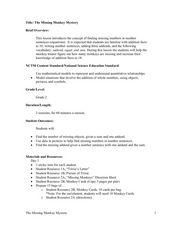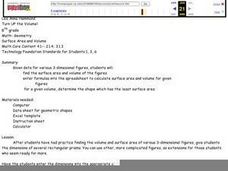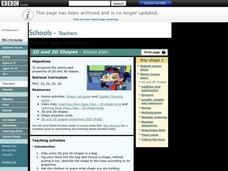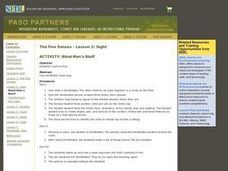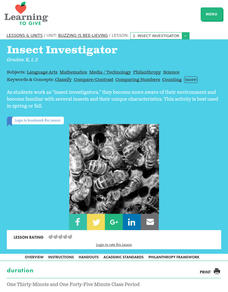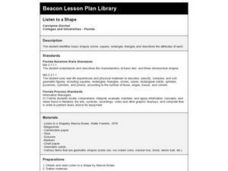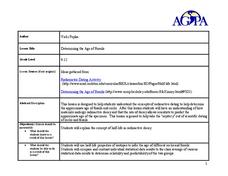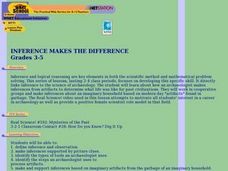Curated OER
Investigation - The M & M Mystery
Sixth graders inspect M&M's to complete statistical data. Students interpret percent of colors represented. They convert data from decimals, fractions, and percents. Using the data, 6th graders create a bar graph and a circle graph.
EngageNY
Margin of Error When Estimating a Population Proportion (part 1)
Use the power of mathematics to find the number of red chips in a bag — it's a little like magic! The activity asks learners to collect data to determine the percentage of red chips in a bag. They calculate the margin of error and...
Baylor College
What Makes Water Special?
Get close up and personal with a drop of water to discover how the polarity of its molecules affect its behavior. Elementary hydrologists split and combine water droplets, and also compare them to drops of oil. Much neater than placing a...
Curated OER
The Missing Monkey Mystery
Second graders explore number values by completing number sentences. For this math functions lesson, 2nd graders identify whole numbers by using a visual aide and practice filling in the blank in number sentences. Students utilize their...
Curated OER
Math Maven's Mysteries: The Bell Clapper Caper
In these math word problem worksheets, learners help solve the mystery about the bell clapper caper. Students determine what the next question should asked in order to solve the secret locker number problem.
Curated OER
Turn Up the Volume
Measuring volume can be a mystery for 5th graders, but this hands-on activity gives the gift of discovery. The volume of simple rectangular solids and irregular shapes are calculated through various methods including displacing liquid in...
Curated OER
Who Took the Cookies
Learners find the missing cookies. In this language arts lesson, students solve the mystery of who is taking the cookies from the cookie jar. Learners are read several books with the same mystery of cookies being taken from the jar.
Curated OER
2D and 3D Shapes
Have your class use online activities to recognize the names and properties of 2D and 3D shapes. They will listen to their teacher describe a mystery shape and try to guess it. Additionally they will watch clips online about a 2D shape...
Curated OER
Blind Man's Bluff
Students count to five. They use two blindfolds and a bean bag. One child is blindfolded. The other children sit close together in a circle on the floor.
Spin the blindfolded person around three times, then release. The children clap...
Curated OER
Junk Sort
Students analyze objects by one or more attributes. In this sorting lesson, students use manipulatives and string or yarn to create a sorting game. Students read books and items from the classroom to sort.
Curated OER
Permutations, Combinations, and Probability
In this probability-worksheet, 11th graders calculate the permutation, combination and probability of an event occurring. There are 5 questions with an answer key.
Curated OER
Math Maven's Mysteries
In these story problem worksheets, 5th graders read the story problem of 'The Case of the Troublesome Triplets.' Students then use the information from the story to help them solve the problem. Students find the money left and figure out...
Curated OER
Insect Investigator
Students examine and identify common insects. They observe these insects in their environment and keep track of how many they see. They use magnifying glasses and special hats to get into the role of an inspector.
Curated OER
Listen to a Shape
First graders identify basic shapes (circle, square, rectangle, triangle) and describes the attributes of each. They use magazines to find examples of each shape, and then make a collage.
Curated OER
Determining the Age of Fossils
Students examine the concept of radioactive dating. In this radioactive dating lesson, students investigate how to determine the ages of fossils and rocks as they learn about half-life radioactive decay.
Curated OER
Inference Makes the Difference
Students explore how archaeologists make inferences from artifacts to explore what life was like in the past. In this archaeology lesson, students work in groups and make inferences about an imaginary household based on modern day...



